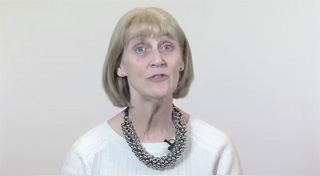Why study this course?
Jennifer Colloby, one of the contributors to this course, will now give you a bit of background into why you might like to study this course.

Transcript
Hello. My name is Jennifer Colloby and I am a member of the team that developed this course.
Welcome to Supporting children’s development. By studying this course you are gaining an introduction to some of the rewards and challenges faced by teaching assistants and other colleagues working with children in schools. If you complete the short assessment at the end of each section you will be able to collect a section badge. These virtual badges provide a form of recognition for your learning and you can display them on your social media profiles, for example, on LinkedIn and Facebook.
Supporting children’s development is made up of five sections. The sections you will be studying are based on common themes and theories that offer insights into how best you can support children’s development.
In Section 1 you will be exploring the development of children’s relationships in both families and in schools.
Section 2 aims to introduce you to some aspects of child development in relation to the development of literacy and reading skills.
In Section 3 you will discover that effective behaviour management in the classroom supports children to behave in ways that helps them participate successfully in lessons, so they both learn and achieve their potential.
In Section 4 you will consider the types of support that can be drawn on for children with special educational needs during their primary and secondary schooling.
Section 5 focuses on a discussion with a teaching assistant, and you will discover what they find rewarding about their job and how they see their career developing. In this section you will be allowed time to reflect on your current situation, and to create a plan for your own personal development.
At the end of the five sections you will find information on ‘Taking your learning further’. These signpost you to relevant websites and resources relating to the continual development of your own learning.
You can study each of the five sections separately and in any order, and collect virtual badges as you go along. The course is flexible and there’s no time limit for completion. This means you can study at your own pace and when it suits you best to do so. We recommend you try to engage with all of the sections, as this will enable you to receive a statement of participation that recognises the learning outcomes you have met. You can then show this to your employer as evidence of your study and learning on this course.
There are guided activities throughout the course that will help you to reflect upon your own practice, and a range of interactive quizzes at the end of Sections 1–4 that give you the opportunity to to test your knowledge for these sections.
There may be many reasons why you have chosen to study this course. It might be to support your professional development by improving your basic skills, or simply for personal interest as well as to develop your confidence as a learner.
It is not essential that you are employed as a teaching assistant in order to study this course. You may have encountered this course as part of your journey to find out more about how children develop – perhaps you are a parent or you may be considering moving into a career working with children. Whatever your reason, studying this course will give you an insight into the many ways you can support children’s development.
I do hope you will enjoy this course and I wish you luck for your future career development.
If you are already a teaching assistant, you will find it helpful to consider how your role and experience match the topics covered in the course. The guided activities throughout this course will help you to learn and reflect on your own role. If you are in a paid teaching assistant role, completion of Supporting children’s development will allow you to demonstrate to your employer your understanding of children’s development. Your employer might also ask you to study this course as part of your induction into a new role, or for your professional development.
Throughout the course you will find activities that ask you to write down your thoughts and feelings based on the issues being discussed. There will be a few simple questions that encourage you to focus your thinking. It would be helpful for you to spend some time thinking about what you have learned within each section, and how it relates to your current role.
These activities are not there to test you, but designed to help you reflect in more detail upon what you have read. These activity spaces are entirely for your own use to help you recognise what you have learned, even if you haven’t yet encountered it within your role. Nobody else will see what you write here. The aim is to help you become more reflective, by bringing together aspects of both your personal and professional experience so you can review and learn from them.
